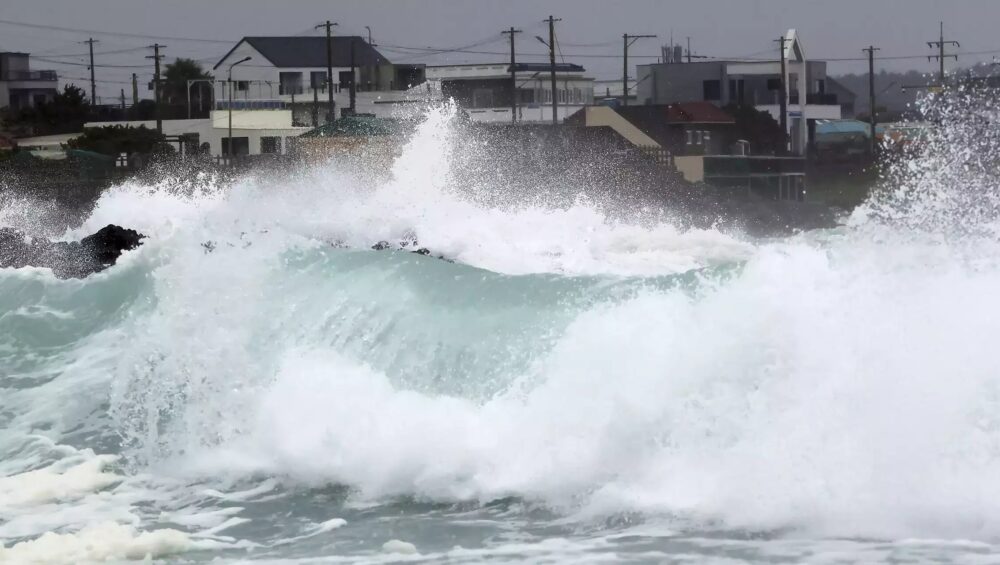Tropical Storm Khanun, after causing damage in Japan, has now reached the Korean peninsula. The storm made landfall in the southern region around 9:20 am local time (0020 GMT) and is predicted to move northward, bringing heavy rainfall across the nation. The meteorological agency of South Korea announced this. Authorities have canceled at least 330 flights and halted sea and rail services due to the storm.
The South Korean port town of Busan faced disruptions as Tropical Storm Khanun hit on August 10. The storm, which had already impacted Japan, arrived on the Korean peninsula around 9:20 am local time (0020 GMT) and is expected to continue its course northward. This will lead to widespread heavy rainfall throughout South Korea, as stated by the country’s meteorological agency.
The situation led to the cancellation of numerous flights and high-speed train services. Businesses in Busan were forced to shut down as the tropical storm brought strong winds and substantial rainfall.
More than 10,000 individuals have been evacuated from high-risk areas. Prime Minister Han Duck-soo urged local authorities to ensure the safety of residents in such regions by verifying their evacuation. Nationwide typhoon warnings have been issued. The northeastern coastal areas are expected to experience up to 500 millimeters of rainfall, while Seoul and nearby regions could see 100-200 millimeters until early Friday.
Heavy rain hit the capital city, and Busan in the south faced strong winds. Pedestrians struggled against gusts that reached speeds of around 145 kilometers per hour (90 miles per hour). Due to these conditions, many stores and cafes had to close temporarily.
By Thursday, over 330 flights had been canceled, and sea routes and railways were also suspended, causing widespread travel disruptions.
More than 1,500 kindergartens and schools were either closed or had delayed their classes. The typhoon led to the evacuation of tens of thousands of scouts from a campsite earlier in the week. These scouts had to shift their activities indoors under the supervision of authorities to ensure their safety.
Although there were no reported casualties from the typhoon by Thursday afternoon, emergency workers had to rescue a few individuals in North Gyeongsang province. These individuals were trapped in various locations due to the storm’s impact. Yonhap news agency reported on these incidents.
Images from Yonhap depicted flooded roads and a woman wading through knee-deep rainwater in the city of Changwon, which received more than 110 millimeters of rain within a three-hour span.
In Japan, the storm prompted the highest-level alert in some areas of the southern Miyazaki region due to the risk of mudslides triggered by heavy rainfall. Evacuation advisories were also issued in other regions. The storm left more than 10,000 households without power on Kyushu island.
Japan Airlines and All Nippon Airways had to cancel around 80 flights for Thursday due to the storm.
The South Korean government has advised the public to stay indoors and avoid going outside until the typhoon subsides.
South Korea has experienced fatalities from flooding and landslides during this year’s monsoon season, with over 40 reported deaths. Last year, the country also faced severe flooding that claimed more than 11 lives. These incidents included individuals trapped in a basement apartment in Seoul, reminiscent of the setting in the Oscar-winning Korean film “Parasite.” The government attributed these extreme weather events to climate change, considering the heavy rainfall as the worst in 115 years of recorded history.




